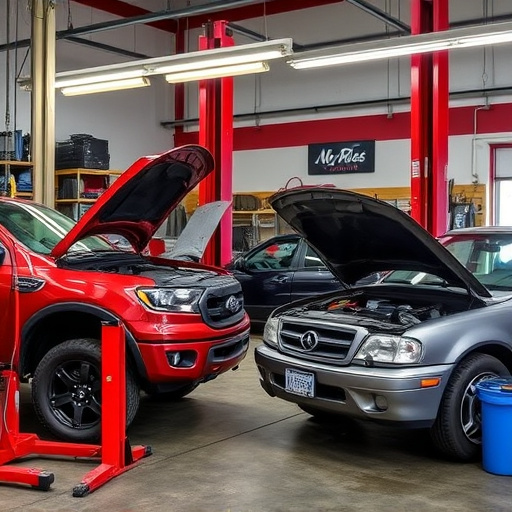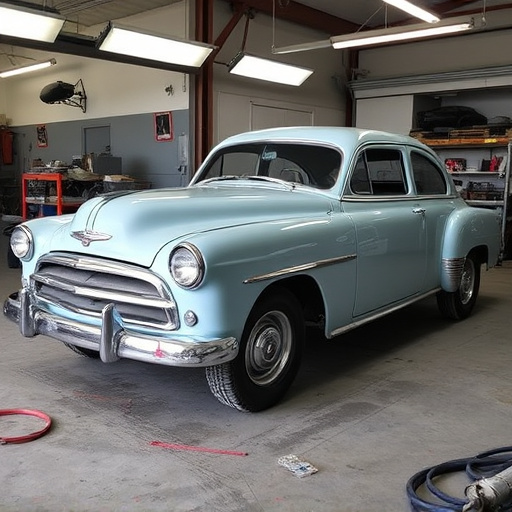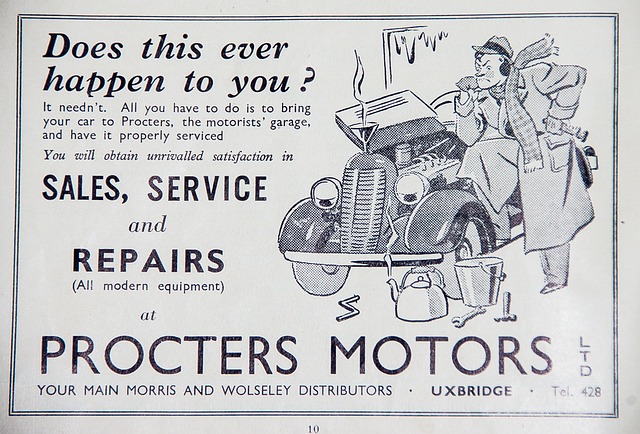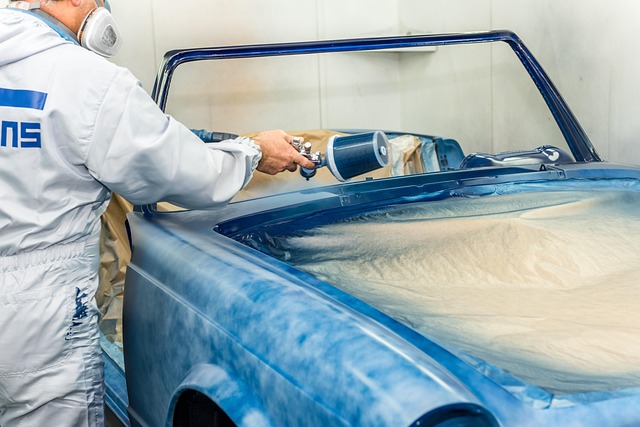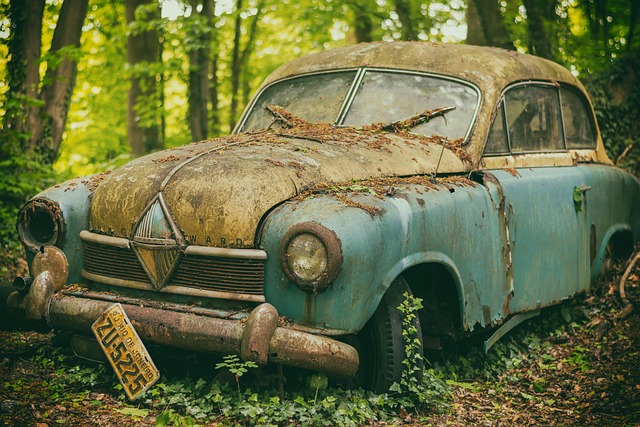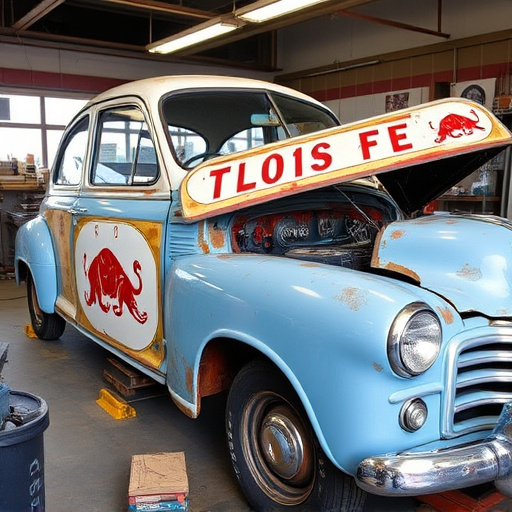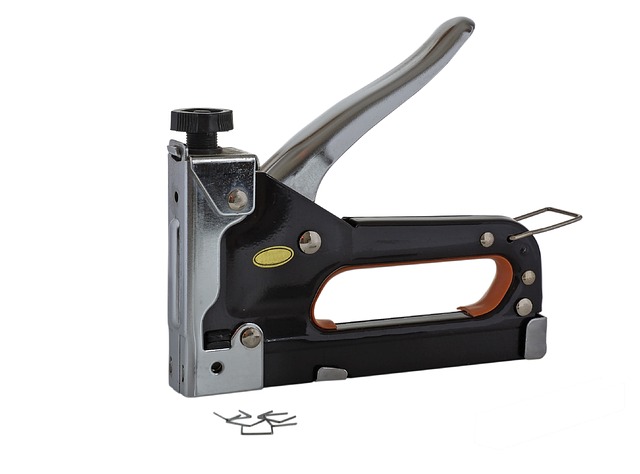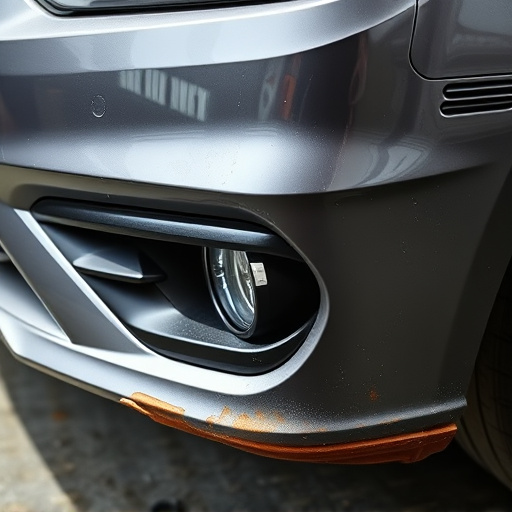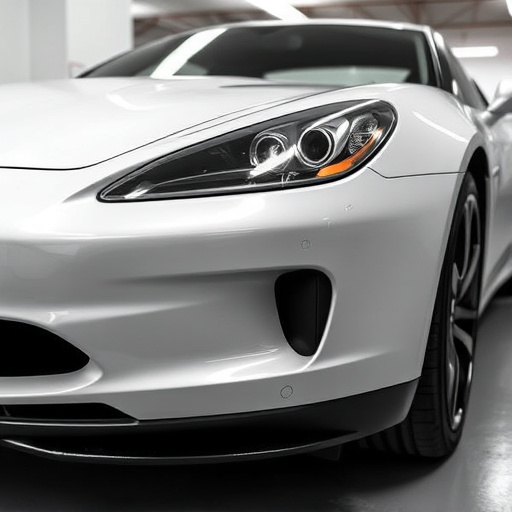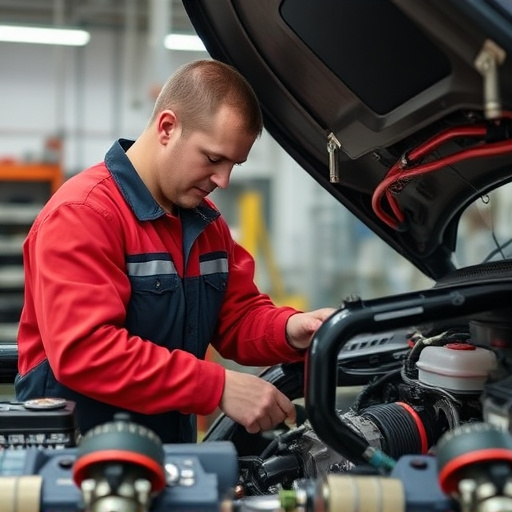UV rays accelerate vehicle paint degradation causing fading, cracking, and loss of gloss. Sun damage restoration involves understanding UV-paint interactions, minimizing direct sunlight exposure during repairs, using protective coatings, and a meticulous restoration process including inspection, surface prep, dent repair, painting, and clear coating to maintain restored surfaces' integrity and aesthetic appeal for longer periods.
“Uncover the subtle yet powerful impact of UV rays on paint surfaces and how it contributes to sun damage. This comprehensive guide aims to empower homeowners and professionals alike to recognize and address these effects before they become costly repairs.
We’ll explore the science behind UV radiation, its visible signs on paint, and provide a step-by-step restoration process for effective sun damage repair. By understanding these key concepts, you’ll be equipped to maintain and preserve your property’s exterior.”
- Understanding UV Rays and Their Effects on Paint
- Signs of Sun Damage to Paint Surfaces
- Restoring Paint After Sun Damage: Step-by-Step Guide
Understanding UV Rays and Their Effects on Paint
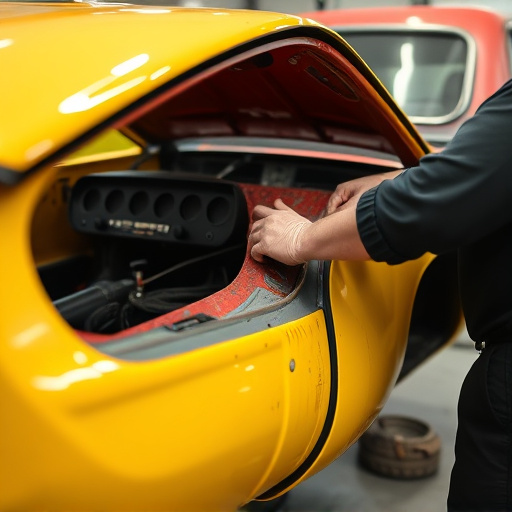
Ultraviolet (UV) rays, an invisible force present in sunlight, play a significant role in the aging and degradation of paintwork, making sun damage restoration a common concern for vehicle owners and automotive body work specialists alike. These high-energy rays penetrate the paint’s surface, causing chemical changes that lead to fading, cracking, and eventual loss of gloss. Over time, UV exposure can weaken the paint’s bond with the underlying surface, resulting in blisters, peeling, and an overall unkempt appearance.
In the context of car restoration or vehicle dent repair, understanding how UV rays interact with paint is key to developing effective protection strategies. By mitigating direct sunlight exposure during the repair process, professionals can ensure that freshly restored surfaces withstand the detrimental effects of UV radiation, extending their longevity and maintaining their pristine condition. This involves careful planning, such as working in shaded areas or using protective coatings designed to reflect or absorb UV rays, thus preserving the beauty and integrity of both new and old paintwork in automotive body work.
Signs of Sun Damage to Paint Surfaces
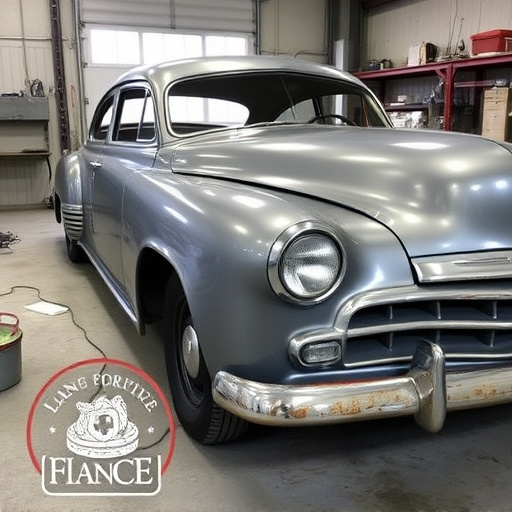
The sun, a constant companion to our planet, brings life and warmth but also poses a silent threat to paint surfaces, particularly those on vehicles. Over time, exposure to ultraviolet (UV) rays from the sun can cause noticeable changes in a vehicle’s paint job, indicating sun damage restoration is necessary. Cracking, peeling, and fading are telltale signs that the paint has suffered from UV degradation. These effects often manifest as blisters or bubbles in the paint, leading to a texture that looks like it’s been sanded roughly. In severe cases, the color may become uneven, with lighter spots where the sun has bleached the pigment.
Inspecting your vehicle regularly for these signs is crucial in the realm of vehicle collision repair and general vehicle care. Collision damage repair experts often encounter sun-damaged paint as a common issue, especially in regions with high sunlight exposure. Prompt action to address these issues through professional sun damage restoration techniques ensures that your vehicle retains its aesthetic appeal and prevents further deterioration from UV radiation, keeping it looking like new for longer periods.
Restoring Paint After Sun Damage: Step-by-Step Guide
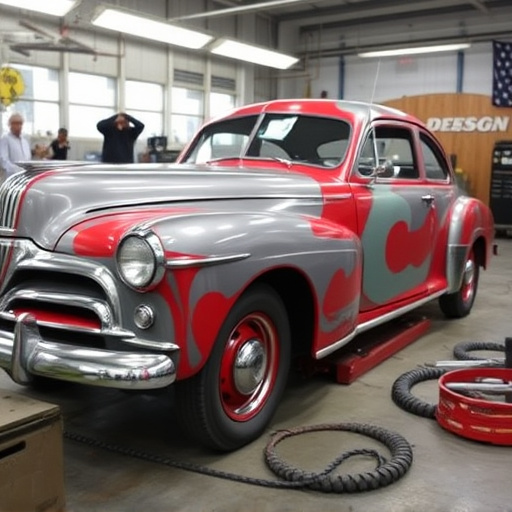
Restoring paint after sun damage involves a meticulous process that can bring your vehicle back to its original gleam. Begin by thoroughly inspecting the affected areas, identifying the extent of the sun damage, which often manifests as peeling, cracking, or fading. Next, prepare the surface by gently sanding to remove any loose paint or debris, ensuring a clean and even base for the restoration process.
For optimal results, start with a car dent repair or fender repair if significant deformities are present. Once the surface is ready, apply an appropriate primer designed to bond well with the existing paint. Allow it to dry completely before moving on to the next step—coating the area with high-quality automotive paint that matches the original color closely. After careful application and thorough drying, finish with a layer of clear coat to protect the repaired area and achieve a seamless, durable finish comparable to that of a professional car repair shop.
UV rays, invisible yet powerful, can significantly deteriorate paint over time. Recognizing the signs of sun damage and understanding its mechanisms is crucial for effective sun damage restoration. By following a systematic approach that includes assessing the extent of damage, preparing the surface, selecting suitable restorative products, and applying them with precision, you can effectively reverse UV-induced fading and peeling, returning your paint to its original condition. Implement these steps promptly to prevent further degradation and enjoy long-lasting, vibrant finishes on your surfaces.

